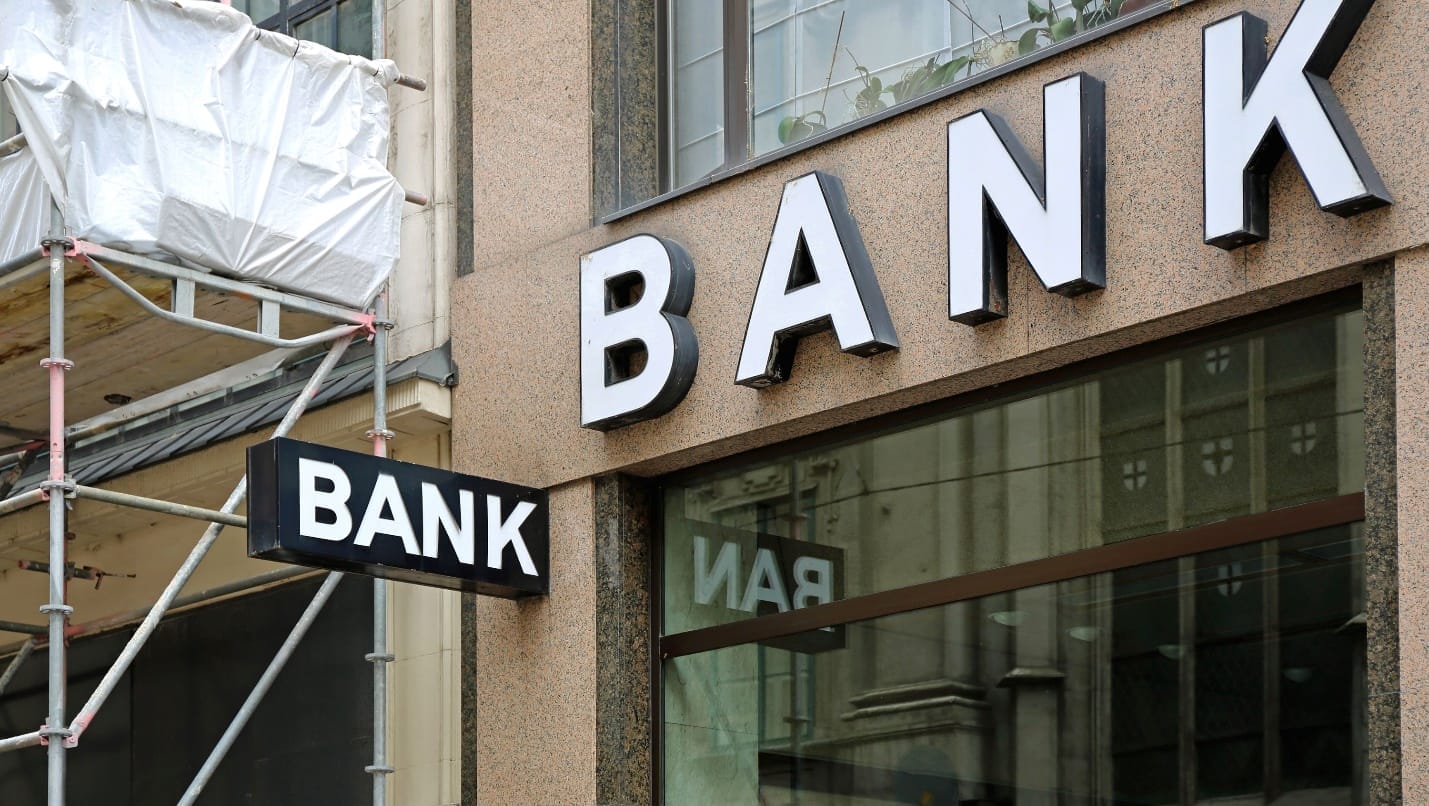Updated 1/5/2024
“Banking is a very good business if you don’t do anything dumb.”
Warren Buffett
The banking industry is an unknown entity to most of the investing public, and most are unfamiliar with what a bank does to make money.
Commercial banking is the financial world’s bedrock, and most of us couldn’t exist without our banks. Did you know that most people have longer relationships with their banks than other people, including their significant others? Think about it; it is the truth; we never leave our banks.
Commercial banks encompass many of our day-to-day operations personally and financially. I thought uncovering these institutions and looking deeper into their operations might be a worthy idea.
Two of my financial gurus, Warren Buffett and Charlie Munger, have made banks a central focus of their investment decisions, from long investments in Wells Fargo, JP Morgan, and Bank of America, to name a few. Buffett has also invested in Goldman Sachs, Bank of New York Mellon, and other smaller regional banks throughout his career.
Buffett understands the banking industry and the potential for long-term gains banks offer to any investor.
In today’s post, we will learn:
Let’s dive in and learn more about the commercial banking industry.
How do Commercial Banks Work?
First, what is a commercial bank?
A commercial bank is a monetary institution that accepts deposits, offers checking accounts, makes loans, and offers basic financial products such as CDs (certificates of deposits) and savings accounts to individuals and small businesses.

Most people do their banking at a commercial bank, and commercial banks make their money by providing loans and credit products and earning a profit from the spread of credit on those products. More on all of that in a moment.
Commercial banks offer additional services, including checking and savings accounts, mortgages, loans, CDs, safety deposit boxes, and trust services.
Banks make money from service charges, not as much as before the financial crisis when banks reduced service charges after they were found to be predatory.
Banks’ fees depend on the range of products offered, from account fees through monthly service charges, minimum balance fees, overdraft services, non-sufficient funds, safe deposit boxes, and late fees.
The fee portion of most banks’ income is smaller than the interest portion. Still, certain banks focus on this aspect of income generation because they organize their business model to be more service-oriented.
The focus of most banks, on an income basis, is the income made from interest rates. The income earned from interest rates is the spread between the rates charged to the party taking out the loan and the interest rates the bank charges.
For example, a bank may offer an interest rate of 5% for a mortgage, and the bank borrows money at a 2.5% rate; the difference of 2.5% is the gain the bank earns. That is the bread and butter of banks, and the main goal for lending out any money is to earn that spread.
On the other side of the equation is the interest rates offered to customers to entice them to deposit money with the bank. In many cases, in a low-interest-rate environment, most banks will lose money on these transactions because they borrow generally higher than the rates they offer customers for savings products.
Using the same rate above of 2.5% that the banks borrow, and then they offer 0.50% for a savings account, the bank is losing 2% on that transaction.
How Banks Are Evolving
Many commercial banks have traditionally been located in brick-and-mortar branches where customers could use teller window services or automated teller machines (ATMs) to do their banking.
However, with the rise of technology, banking is transforming like most other industries. Banks such as Ally, CIBC, Capital One, and HSBC are changing the way we bank, with most services now available online, including all traditional banking services such as checking, savings, and CDs.
Because these online banks don’t have any brick-and-mortar locations, they offer a wider range of products and much lower costs to customers and, in many cases, no costs. Typically, the savings rates offered are higher than traditional banks because online banks have lower overhead and fewer expenses than traditional banks.
The move towards online banking has also transformed how many traditional banks operate, and many now have major technology teams to ensure they stay competitive in the online world.
Commercial banks are a critical piece of the economy, too. Not only do they provide people with an essential service, but they also help create and promote capital expansion and liquidity in the market.
What that entails is turning deposits from customers into loans to other customers. Commercial banks create credit, leading to production, employment, and consumer spending growth. All of which boost and encourage the growth of the economy.
Because of all those benefits offered, commercial banks are heavily regulated by central banks, and rightfully so, with the egregious behavior exhibited during the Great Financial Crisis.
For example, central banks dictate that commercial banks carry higher reserve requirements in the case of any financial struggles the economy might encounter, such as the recent pandemic-induced slowdown.
The reserve increase helps stabilize banks and ensure they have enough liquidity to offset any losses encountered during a financial crisis.
Also, banks offer security to customers via the Federal Deposit Insurance Corporation (FDIC), which ensures customer deposits up to $250,000 in all checking and savings accounts.
Credit With Banks
On the credit front, commercial banks lend most of their funds out as mortgage loans, particularly Wells Fargo, the industry’s mortgage lending leader.
Auto lending is another significant source of secured lending from banks. Secured lending is loans with something of value tied to the loan, such as a home or a car. Car loans are typically smaller in amount and have shorter terms than mortgages.
Credit cards are another significant source of lending in the banking world. Credit cards are essentially personal lines of credit that customers can draw on at any time. Visa and Mastercard, the two most popular cards, offer their proprietary networks that allow money to move between the shopper’s bank and the merchant’s bank after a purchase.
Not every bank offers credit cards; the default rates of these credit types are far higher than those of secured financing. That said, credit cards offer attractive fees for banks via interchange fees charged to merchants for accepting the bank’s cards and the elevated interest rates the banks charge to customers carrying balances.
Industry Analysis
The commercial banking industry is expected to grow 7% between 2020 and 2025. In 2019, the commercial banking industry reported $776 billion in revenues, with increases expected each year in the future.

Between 2016 and 2018, the commercial banking industry had 239 mergers and acquisitions. Just 27 of these transactions equaled $100 million or greater.
One of the largest recent mergers was the transaction between Fifth Third Bank, which agreed to buy MB Financial for $4.7 billion. The merger between BB&T and SunTrust Bank is even more recent, which closed for $66 billion and makes the new bank, Truist, the sixth-largest by assets in the U.S.
Here are some additional stats for you regarding commercial banks;
- Total banks – 4,430
- Total Assets – $19,841 billion
- Total Loans – $10,331 billion
- Deposits – $14,464 billion
- Net Income – $16,226 billion
- Average Return on Assets – 0.33
- Average Return on Equity – 3.24%
- Net Interest Margin – 2.79
- Equity to Assets – 10.17
- Net Charge Off Rate – 0.56
- Net Charge Off Real Estate – 0.04
- Commercial Loan Charge Offs – 0.65
The commercial banking industry has been beaten down during the pandemic; as a comparison, the banking industry’s performance has rivaled the performance following the collapse of the Lehman Brothers in 2008.
During March, much of the banking sector was sold off, which enabled the sector to underperform much of the market. The fears were founded on the belief that banks would suffer massive losses on loan defaults as businesses were forced to shut their doors during the pandemic’s onset.
The fears proved unfounded as the banking sector had done a far superior job of setting aside substantial reserves to preserve their capital, including dividend payments and share repurchases.
Much of the liquidity pushed through the economy has gone through commercial banks in the form of low-interest rate loans via the CARES Act passed by Congress and the Federal Reserve’s funding of treasuries. All of which created more credit and liquidity in the markets and on the main street for consumers.
Banks are in a better position now, from a funding perspective, than they were at the onset of the market downturn in March, but the prices the banks trade at have not recovered to the pre-COVID levels as of the writing of this post.
Some additional interest tidbits concerning banks:
- The total overall number of commercial banks from 2002 to 2018 has dropped from a high of 7,780 to the current level of 4,708.
- The largest bank by total assets is JP Morgan, with $2,355 billion.
- The largest bank by total revenues is JP Morgan, with $142.2 billion in revenues in 2019. The second was Bank of America, with $113,59 billion, and Wells Fargo, with $103.92 billion, was third.
- Commercial banks have grown their total assets as an industry from $17.49 billion in 1990 to $646.8 billion in 2019.
Lists of Commercial Banks
Let’s finish our discussion on the commercial banking industry with a list of some better commercial banks.

JP Morgan
JP Morgan is the commercial banking world leader, with nearly 5,000 branches and 16,000 ATMs, and according to the bank, nearly half of all banking customers bank with JP Morgan.
The bank currently has $2.82 trillion in assets, with $2.05 trillion in deposits.
JP Morgan is based out of New York and has Jamie Dimon running the ship; Dimon is widely considered the finest CEO of any commercial bank, and his shareholder letters are a must-read.
The bank operates out of four segments:
- Consumer & Community Banking
- Corporate & Investment Bank
- Commercial Banking
- Asset & Wealth Management
With the four segments, the bank can meet many of its customer’s needs, from deposits to wealth management.
Some stats:
- 10-year median ROA – 0.9%
- 10-year median ROE – 10.2%
- Net Interest Margin – 2.7%
- 10-year CAGR Net Interest Income – 1.1%
- 10-year CAGR Deposits – 5.2%
Bank of America
Bank of America serves about 66 million customers and small business consumers, with some of the best digital innovations among commercial banks. Bank of America has more than 37 million digital customers.
The bank currently boasts $2.16 trillion in assets and deposits of $1.82 trillion. Bank of America is based in Charlotte, North Carolina, and has recovered nicely from the Great Financial Crisis. The bank was one of the prime targets as it was the first lender of many account holders who defaulted on their subprime loans. The bank has also become a darling on Wall Street lately because of Buffett’s increased stake in the company.
Stats:
- ROA 10-year median – 0.%
- ROE 10-year median – 5.6%
- Net Interest Margin – 2.6%
- Net Interest Income – 0.4%
- Deposits – 3.8%
Wells Fargo
Wells Fargo, founded in 1852, is still trying to bounce back from the account opening shenanigans it suffered from in 2014. The bank is working hard to rebound from those setbacks, has rebranded itself, and offers some of the best technological advances in the banking world.
The company has shuttled through multiple CEOs over the last five years before settling on the current CEO, who pledges to work hard to reduce costs at the bank, which have soared over the years.
Wells Fargo currently has $1.80 trillion in assets and $1.5 trillion in deposits and is based in San Francisco, CA.
Wells Fargo is a diversified financial institution which offers many of the most common products through its three segments:
- Community Banking
- Wholesale Banking
- Wealth and Investment Management
The bank specializes in mortgages and is the U.S. leader in home mortgages and business financing.
Stats:
- 10-year median ROA – 1.2%
- 10-year median ROE – 11.4%
- Net Interest Margin – 3.5%
- Net Interest Income – 0.2%
- Deposits – 4.8%
Citibank
Based out of Sioux Falls, South Dakota, Citibank has approximately 700 branches throughout the U.S. and more than 1,800 branches outside the U.S. Also, the bank offers more than 65,000 fee-free ATMs.
The bank currently has assets of $1.63 billion and deposits of $1.24 billion. Citibank operates out of two segments:
- Global Consumer Banking
- Institutional Clients Group
Of the major commercial banks, Citibank is the first among international banks.
Stats:
- 10-year median ROA – 0.7%
- 10-year median ROE – 6.6%
- Net Interest Margin – 3.3%
- Net Interest Income – (0.3)%
- Deposits – 2.5%
That wraps up our analysis of some of the larger commercial banks out there; some others that might merit some additional analysis are:
- US Bank
- Truist Bank
- Ally Bank
- Fifth Third Bancorp
Final Thoughts
The banking industry is a sector that is critical to the economy but doesn’t get a lot of love, either from consumers or investors. Many don’t understand how the commercial banking industry works or how the banks make money.
Banks are a great source of revenue, particularly dividends, which are some of the better yields out there. Once you understand banks’ business model, it is like investing in any other sector, finding the diamonds in the rough, and buying and holding for the long-term.
Among the better banks, you will find stability and great dividend yields; it is up to us to find those diamonds in the commercial banking industry.
The commercial banking industry encompasses many bigger-name and smaller regional banks that are fantastic businesses. The sector is critical to the economy and offers many products we all need for our finances. And understanding commercial banks plus investment banks gives us a better understanding of how the economy works.
We will wrap up our discussion today concerning the commercial banking industry.
As always, thank you for taking the time to read today’s post, and I hope you find something of value on your investing journey.
If I can further assist, please don’t hesitate to reach out.
Until next time, take care and be safe out there.
Dave

Dave Ahern
Dave, a self-taught investor, empowers investors to start investing by demystifying the stock market.
Related posts:
- How to Calculate the Loan to Deposit Ratio; Average LDR of the Big Banks Updated 3/30/2023 Deposits continue as the lifeblood of banks, and loans help generate income for the bank. The more deposits, the more loans, leading to...
- How to Calculate the Loan to Deposit Ratio; Average LDR of the Big Banks Deposits are the lifeblood of banks, and loans are the means to generating income for the bank. The more deposits, the more loans, which leads...
- What is Net Interest Margin and How Do I Calculate It? “In the end, banking is a very good business unless you do dumb things.” – Warren Buffett Investing in banks remains the same as investing...
- What is Banking As A Service (BaaS)? Finally the Future of Banking? Updated 4/4/2024 One of the hottest scenes in the market today is fintech, with $266 billion in new investments in the first half of 2021...
